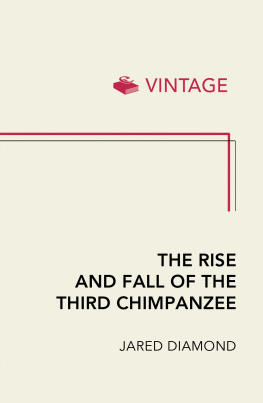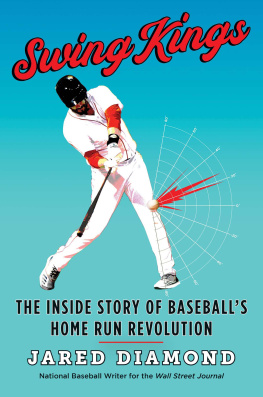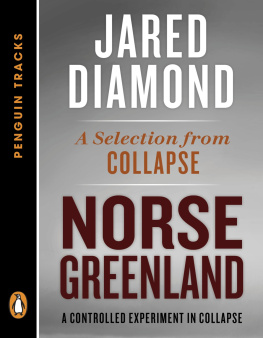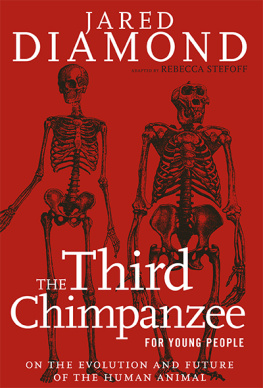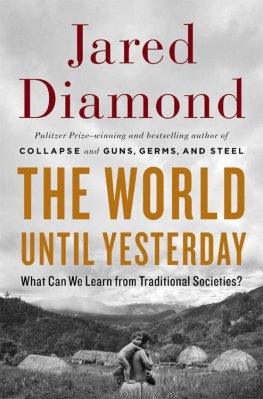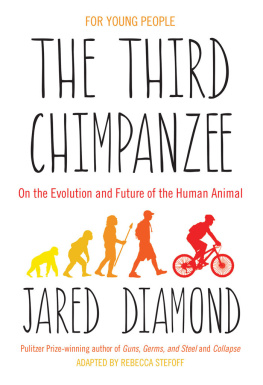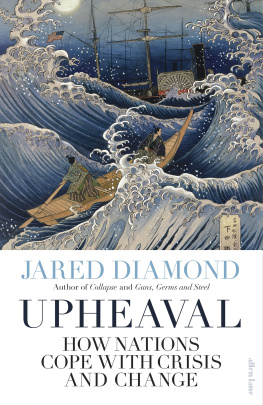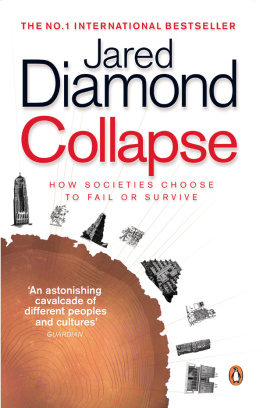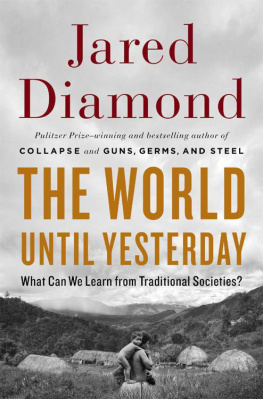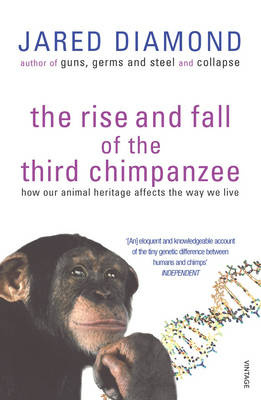Jared Diamond - Collapse: How Societies Choose to Fail Or Succeed
Here you can read online Jared Diamond - Collapse: How Societies Choose to Fail Or Succeed full text of the book (entire story) in english for free. Download pdf and epub, get meaning, cover and reviews about this ebook. year: 2011, publisher: Penguin Group USA, genre: Politics. Description of the work, (preface) as well as reviews are available. Best literature library LitArk.com created for fans of good reading and offers a wide selection of genres:
Romance novel
Science fiction
Adventure
Detective
Science
History
Home and family
Prose
Art
Politics
Computer
Non-fiction
Religion
Business
Children
Humor
Choose a favorite category and find really read worthwhile books. Enjoy immersion in the world of imagination, feel the emotions of the characters or learn something new for yourself, make an fascinating discovery.

- Book:Collapse: How Societies Choose to Fail Or Succeed
- Author:
- Publisher:Penguin Group USA
- Genre:
- Year:2011
- Rating:4 / 5
- Favourites:Add to favourites
- Your mark:
- 80
- 1
- 2
- 3
- 4
- 5
Collapse: How Societies Choose to Fail Or Succeed: summary, description and annotation
We offer to read an annotation, description, summary or preface (depends on what the author of the book "Collapse: How Societies Choose to Fail Or Succeed" wrote himself). If you haven't found the necessary information about the book — write in the comments, we will try to find it.
Collapse: How Societies Choose to Fail Or Succeed — read online for free the complete book (whole text) full work
Below is the text of the book, divided by pages. System saving the place of the last page read, allows you to conveniently read the book "Collapse: How Societies Choose to Fail Or Succeed" online for free, without having to search again every time where you left off. Put a bookmark, and you can go to the page where you finished reading at any time.
Font size:
Interval:
Bookmark:
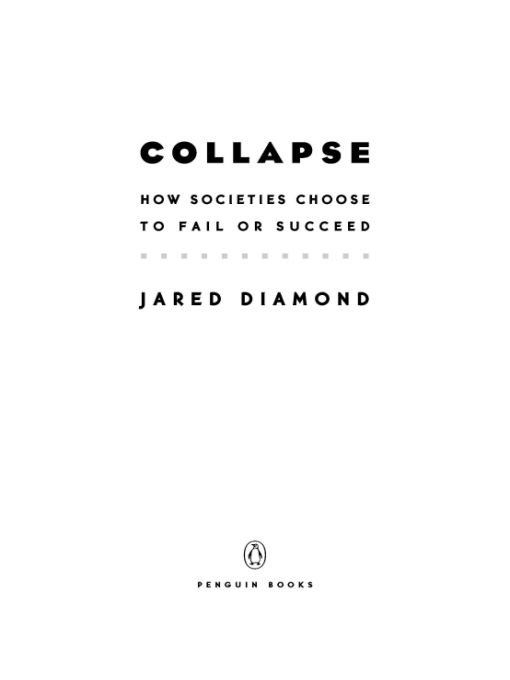
Extraordinary in erudition and originality, compelling in [its] ability to relate the digitized pandemonium of the present to the hushed agrarian sunrises of the far past.
Readers learn on page 1 that they are in for quite a ride. No reader may carp that Diamond has provided a set of examples that is too limited chronologically or geographically. Diamond... has been to most of the lands cited, often staying for months or even years, and what he writes about them and their populations is informed and engagingly colored by personal observation. The Icelanders... learned to face up to reality and adapt to living within the limits of their environments. Jared Diamond has written a book to help us do the same.
With Collapse, Jared Diamond has written a fascinating account of the collapse of civilizations around the world.... A reader cannot help but leave the book wondering whether we are following the track of these other civilizations that failed. Any reader of Collapse will leave the book convinced that we must take steps now to save our planet.
In a world that celebrates live journalism, we are increasingly in need of big-picture authors like Jared Diamond, who think historically and spaciallyacross an array of disciplinesto make sense of events that journalists may seem to be covering in depth, but in fact arent.... Thank heavens there is someone of the stature of Diamond willing to say so.
Diamond looks to the past and present to sound a warning for the future.
Rendering complex history and science into entertaining prose, Diamond reminds us that those who ignore history are bound to repeat it.
Taken together Guns, Germs, and Steel and Collapse represent one of the most significant projects embarked upon by any intellectual of our generation. They are magnificent books: extraordinary in erudition and originality, compelling in their ability to relate the digitized pandemonium of the present to the hushed agrarian sunrises of the far past. I read both thinking what literature might be like if every author knew so much, wrote so clearly and formed arguments with such care.
Essential reading for anyone who is unafraid to be disillusioned if it means they can walk into the future with their eyes open.
On any short list of brilliant minds in the world today, Diamond makes the cut.
Read this book. It will challenge you and make you think.
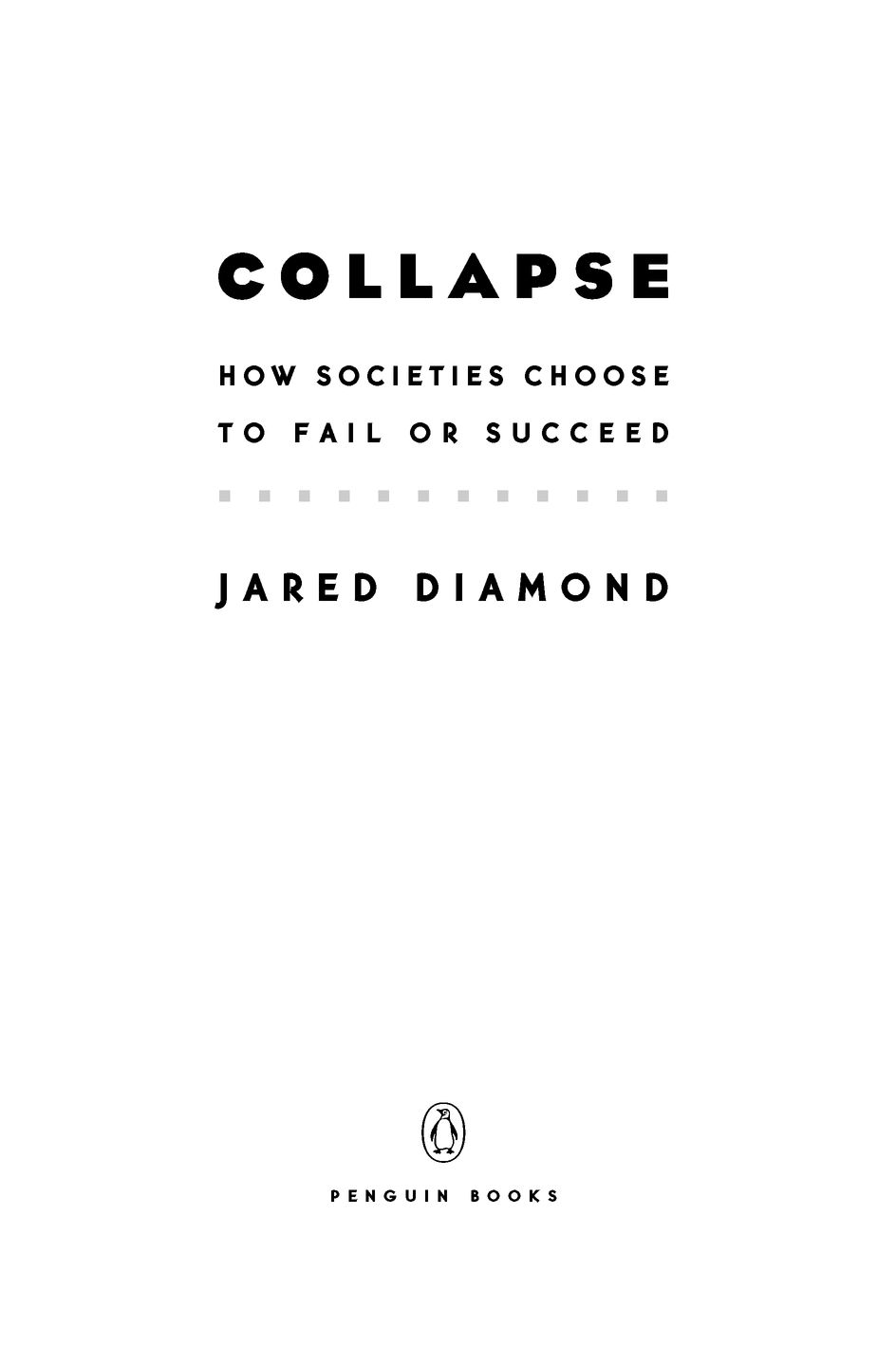
Jack and Ann Hirschy,
Jill Hirschy Eliel and John Eliel,
Joyce Hirschy McDowell,
Dick (1929-2003) and Margy Hirschy,
and their fellow Montanans:
guardians of Montanas big sky
Who said: Two vast and trunkless legs of stone
Stand in the desert. Near them, on the sand,
Half sunk, a shattered visage lies, whose frown,
And wrinkled lip and sneer of cold command,
Tell that its sculptor well those passions read,
Which yet survive, stampt on these lifeless things,
The hand that mockt them and the heart that fed:
And on the pedestal these words appear:
My name is Ozymandias, king of kings:
Look on my works, ye Mighty, and despair!
Nothing beside remains. Round the decay
Of that colossal wreck, boundless and bare
The lone and level sands stretch far away.
Ozymandias, by Percy Bysshe Shelley (1817)
Font size:
Interval:
Bookmark:
Similar books «Collapse: How Societies Choose to Fail Or Succeed»
Look at similar books to Collapse: How Societies Choose to Fail Or Succeed. We have selected literature similar in name and meaning in the hope of providing readers with more options to find new, interesting, not yet read works.
Discussion, reviews of the book Collapse: How Societies Choose to Fail Or Succeed and just readers' own opinions. Leave your comments, write what you think about the work, its meaning or the main characters. Specify what exactly you liked and what you didn't like, and why you think so.

